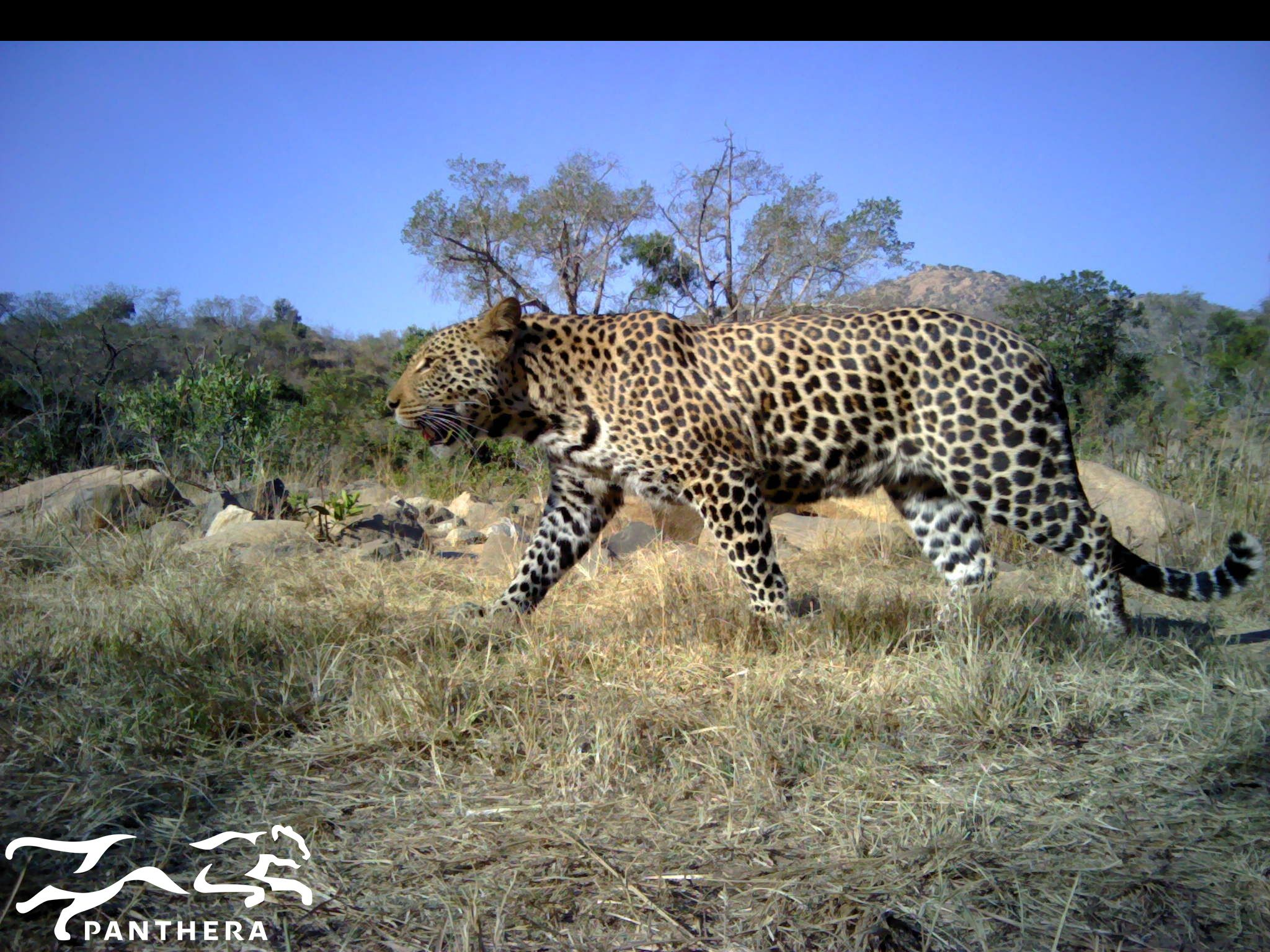 A camera-trap photo of a leopard taken during a survey at one of Panthera’s surveillance sites in KwaZulu-Natal
A camera-trap photo of a leopard taken during a survey at one of Panthera’s surveillance sites in KwaZulu-Natal
A six week leopard camera-trap survey, conducted by wildlife NGO Panthera* is in progress on Barberton Nature Reserve, which includes Mountainlands. This is done in partnership with the South African National Biodiversity Institute and funded by Peace Parks Foundation.
Matthew Rogan, a University of Cape Town PhD student who is affiliated to Panthera and Panthera’s Furs for Life Project Coordinator, Gareth Whittington-Jones, have placed about 70 trap-camera-traps at various locations across the reserve. At each station two cameras have been set up opposite one another in an effort to photograph both flanks of any leopards utilising the area so that the researchers can identify individuals based on their unique spot patterns.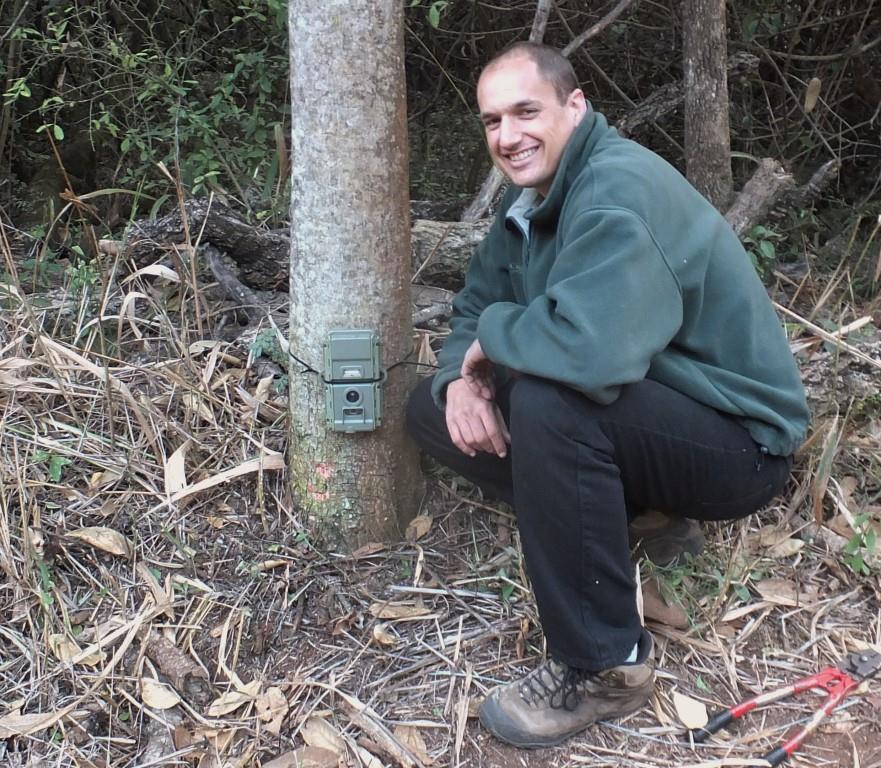 All set up: Matthew Rogan with a trap camera-trap in the Mountainlands section of Barberton Nature Reserve
All set up: Matthew Rogan with a trap camera-trap in the Mountainlands section of Barberton Nature Reserve
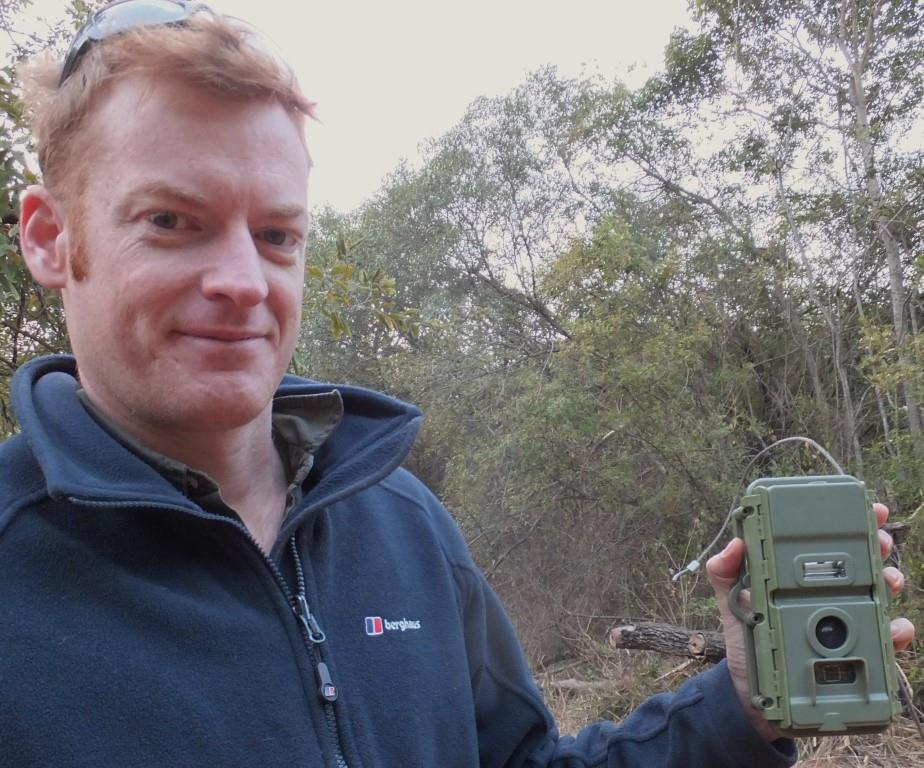 Gareth Whittington-Jones with one of the Panthera camera traps.
Gareth Whittington-Jones with one of the Panthera camera traps.
Leopards are notoriously elusive and the intention is to use the camera trap surveys to gather reliable data that can be used to provide the Mpumalanga Tourism and Parks Authority (MTPA) with robust leopard population density estimates for a number of provincial reserves in Mpumalanga. A survey was completed at Songimvelo Nature Reserve earlier in the year and further surveys are also planned for Blyde River Canyon Nature Reserve and Loskop Dam Nature Reserve . This is also done in an effort to establish, in partnership with the MTPA, a monitoring framework for leopards that provides reliable data on population trends at a provincial scale.
Matthew downloads footage on a weekly basis. From our perspective the study will hopefully provide interesting insight about any leopards utilising Mountainlands as sightings have been few and far between.
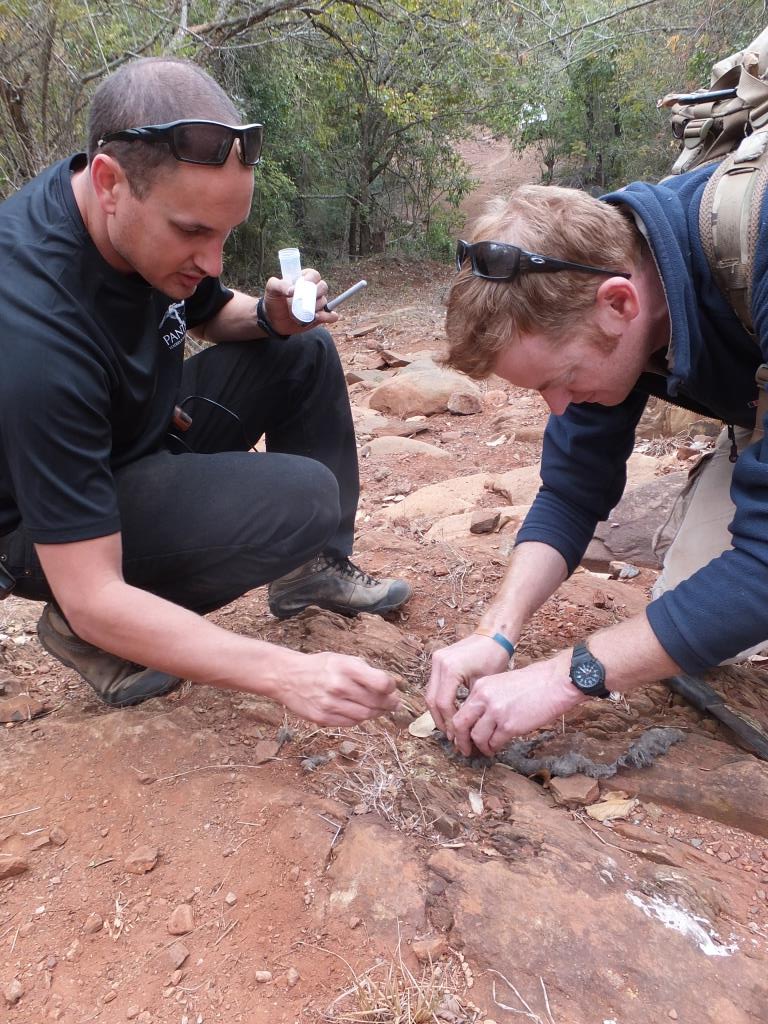 Matthew (left) and Gareth collecting a leopard scat (dropping) sample on behalf of another UCT PhD student affiliated to Panthera. DNA from scat samples will be used to develop a ‘genetic map’ of leopards in southern Africa which will help determine the origin of confiscated leopard skins and assist with identifying poaching hotspots in the region. Note Matthew and Gareth are not using their bare hands to collect the sample.
Matthew (left) and Gareth collecting a leopard scat (dropping) sample on behalf of another UCT PhD student affiliated to Panthera. DNA from scat samples will be used to develop a ‘genetic map’ of leopards in southern Africa which will help determine the origin of confiscated leopard skins and assist with identifying poaching hotspots in the region. Note Matthew and Gareth are not using their bare hands to collect the sample.
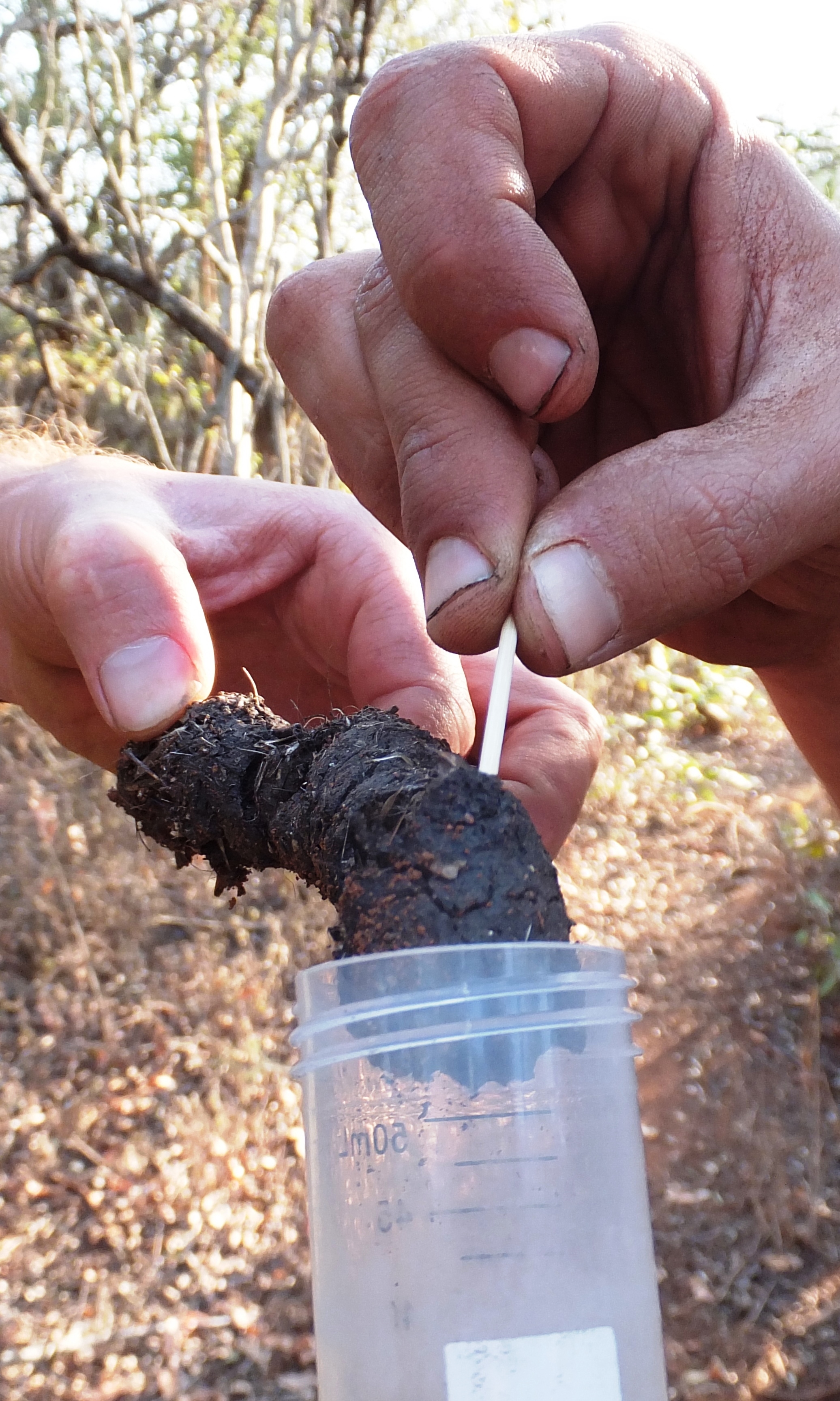
Breaking off a piece of scat that has not been touched by hands
According to the International Union for the Conservation of Nature (IUCN) Red List of Threatened Species, the conservation status of the leopard (Panthera pardus) has recently been upgraded to ’Vulnerable’ on account of the increasing threats faced by the species. While leopard are widely distributed across Africa and Asia their populations have declined and they are now locally extinct in large areas of their historic range.
“Little is currently known about leopard populations trends in Mpumalanga, but unfortunately across many of our other surveillance sites in KwaZulu-Natal and Limpopo Provinces populations have shown substantial declines in recent years .’’ said Gareth. In South Africa threats to leopard include habitat loss and fragmentation, incidental snaring, targeted poaching for skins which are used in ceremonial attire, human-leopard conflict and unsustainable trophy hunting.
We would like to wish Matthew all the best with his research and studies and look forward to sharing some of the interesting images that he captures.
*Panthera is a New York- based charitable organization devoted to preserving big cats and their ecosystems around the globe. They have initiated and supported conservation projects that protect leopards in 30 countries across Africa, the Middle East and tropical Asia. To learn more about Panthera, visit www.Panthera.org
